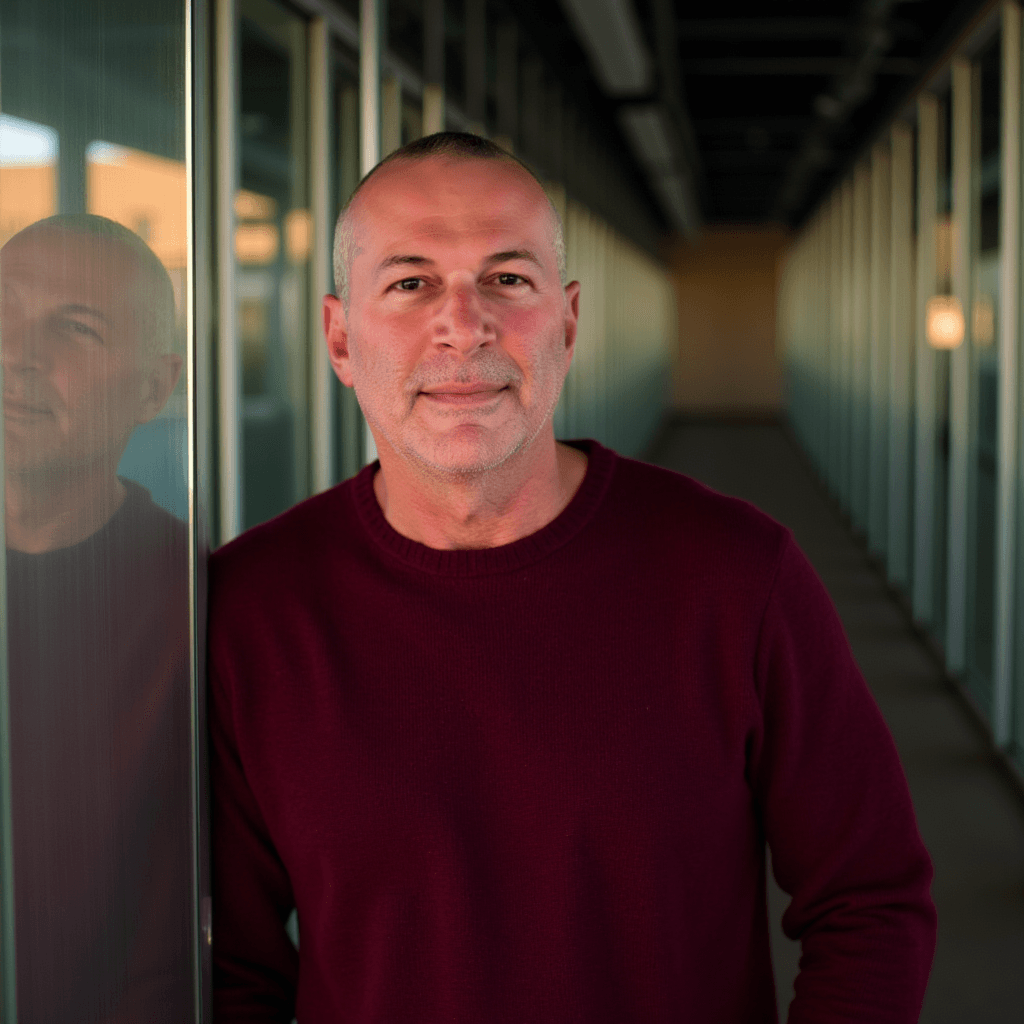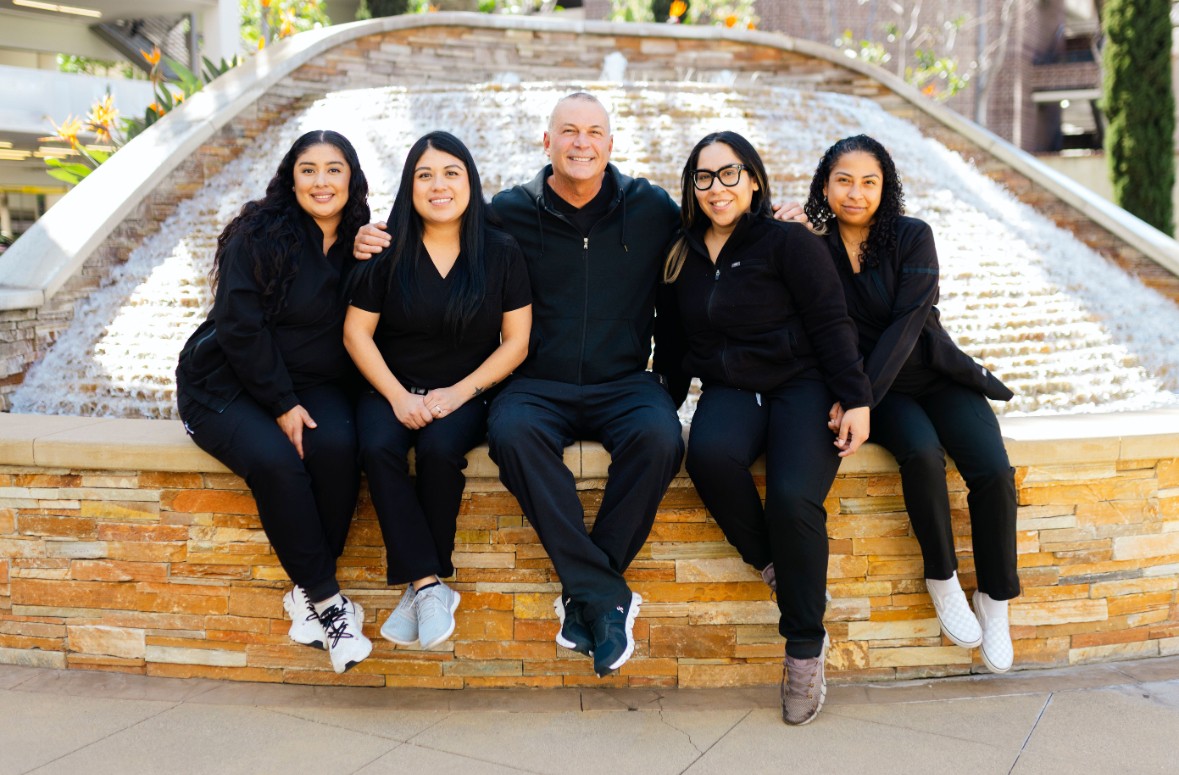We recently connected with David Ghozland and have shared our conversation below.
David, thanks for joining us, excited to have you contributing your stories and insights. Setting up an independent practice is a daunting endeavor. Can you talk to us about what it was like for you – what were some of the main steps, challenges, etc.
When I first graduated from residency, I took a job with a private practice in San Diego, but within a few months it became clear that the arrangement was unsustainable. I was working tirelessly, yet severely underpaid for my efforts, and I quickly realized that if I wanted to practice medicine in a way that aligned with my values, I would need to strike out on my own. Deciding to open my own practice was both daunting and risky, but I believed strongly that the long-term rewards would outweigh the immediate struggles. I took over a pre-existing practice that was in disarray, only to discover that most of the patients had already left. Overnight, I went from a structured job to an office with one employee, almost no income, and an overwhelming list of responsibilities. In those early days, we did everything ourselves — cleaning the office, answering phones, scheduling, billing, seeing patients, and managing every aspect of operations. It was humbling but also empowering, because I learned firsthand that building a medical practice requires not only clinical skills but also grit, resourcefulness, and a willingness to do whatever needs to be done.
To keep the practice afloat and establish myself in the medical community, I said yes to every opportunity. I volunteered to take call at Cedars-Sinai whenever possible, covered for other physicians when they needed time off, assisted surgeons in the operating room, and gave back by volunteering at the LA Free Clinic. These roles not only provided some income but also created invaluable networking opportunities with other physicians and hospitals. Slowly, my name began circulating as someone dependable, hardworking, and willing to go the extra mile. At the same time, I poured enormous energy into patient care. I spent as much time as possible during visits listening, understanding, and making sure patients felt cared for on a personal level. Those early patients became my greatest advocates, referring friends and family and helping to rebuild trust in a practice that had nearly collapsed before I took it over.
As my reputation grew, the practice began to stabilize, and I looked for ways to expand strategically. One of the key turning points was acquiring practices from physicians who were retiring. By absorbing these practices, I not only inherited their patient base but also demonstrated continuity of care that patients appreciated. Each acquisition added to the practice’s volume, reach, and credibility, allowing us to grow from a struggling startup into a thriving, busy medical practice. The process was never easy — each step required long hours, financial risk, and constant problem-solving — but it reinforced the lesson that sustained effort and creative thinking are the foundations of success.
Reflecting on those years, I believe the biggest lesson I learned is that there is no substitute for hard work and reputation. Medicine is ultimately a relationship-based field. Patients remember how you made them feel, colleagues remember if you supported them when they needed help, and communities reward physicians who show up with consistency and integrity. In the beginning, I had to wear every hat in the office and work tirelessly to prove myself, but over time that dedication translated into trust, growth, and opportunity. For anyone starting out, my advice is to embrace the grind, think outside the box, and put your best self forward at every opportunity. Your reputation becomes your most valuable asset, and if you protect and nurture it, it will carry you further than you could ever imagine.

David, before we move on to more of these sorts of questions, can you take some time to bring our readers up to speed on you and what you do?
I am a board-certified gynecologist with a specialty focus in cosmetic gynecology, women’s health, and wellness optimization. My path into this field began after completing my residency, when I quickly realized that practicing medicine in a traditional private practice model left me overworked, underpaid, and unable to truly serve patients in the way I believed they deserved. Within months, I made the difficult decision to open my own practice, even though the timing and resources were far from ideal. I took over an existing office that was in disarray, with almost no patients left, and started from scratch with only one employee. In those early years, I did everything from cleaning the office to seeing patients, managing operations, volunteering at the LA Free Clinic, taking call at Cedars-Sinai, and covering for any physician who needed time off. By saying yes to every opportunity and by spending extra time with patients to really understand them and provide the best care possible, I gradually built a reputation that grew into a thriving practice.
Today, my practice offers a comprehensive range of services that combine advanced surgical procedures, cosmetic gynecology, hormone optimization, wellness treatments, and regenerative medicine. We treat women who are seeking functional improvement, aesthetic refinement, or enhanced quality of life—often addressing issues that are deeply personal and frequently overlooked. From labiaplasty, vaginoplasty, and other cosmetic procedures, to hormone replacement therapy, peptide therapy, IV wellness, and sexual health interventions, our services are designed to restore confidence, improve intimacy, and promote long-term wellness. We also integrate cutting-edge recovery protocols that use techniques like PRP, peptide therapy, and carboxytherapy to optimize healing and outcomes.
What sets us apart is the way we approach medicine: not simply as a series of procedures, but as a holistic experience. I believe that spending time with patients, listening to their stories, and creating individualized treatment plans is just as important as the technical aspects of surgery or wellness care. In a world where healthcare can feel rushed and transactional, we focus on building relationships and trust. Patients often tell us that what stands out most is not only the results they achieve but also the kindness, care, and transparency they experience throughout their journey with us.
I am most proud of the reputation we have built over the years—one grounded in trust, innovation, and patient-centered care. Starting from nothing and growing into one of the busiest and most respected practices in the region is a testament to persistence, hard work, and a refusal to settle for mediocrity. Equally important, I am proud of pushing the boundaries in cosmetic gynecology and women’s health by developing enhanced recovery protocols, teaching other surgeons, and integrating new technologies that improve outcomes.

Other than training/knowledge, what do you think is most helpful for succeeding in your field?
Other than training and knowledge, I believe the most important factor in succeeding in my field is the ability to think outside the box and bring that creativity directly into patient care. Medicine, and especially women’s health, often relies heavily on tradition and standard protocols, but true innovation happens when you question the status quo and look for better ways to serve patients. In my own career, this mindset has led me to invent two surgical procedures—one for the treatment of Bartholin cysts and another for painful intercourse—developments that were born from listening to patients’ frustrations with existing options and refusing to accept that “good enough” was the best we could offer.
Beyond surgical innovation, I have also authored four books, written chapters in respected medical textbooks, and lectured on cosmetic gynecology and women’s health across the United States. Sharing knowledge not only helps elevate the field as a whole but also pushes me to constantly refine my own approach, staying at the forefront of emerging techniques and novel treatments. I am always scanning the horizon for new therapies—whether regenerative medicine, peptides, or advanced recovery protocols—that can enhance outcomes and improve patient quality of life.
But just as important as innovation and technical skill is the way we make patients feel. Bedside manner is, in my opinion, one of the most powerful determinants of success. When patients feel comfortable, heard, and truly cared for, they place their trust in you—and that trust is the foundation of any effective treatment. No matter how advanced your knowledge or skills may be, if patients don’t feel respected and supported, the relationship falters. In my practice, we emphasize creating an environment where patients feel safe discussing deeply personal concerns and where they know we are fully invested in helping them achieve the best possible results.
Ultimately, success in this field is about blending innovation with compassion. It’s about doing the hard work of developing new techniques and constantly pushing the boundaries, while never losing sight of the fact that each patient is an individual with unique needs, fears, and goals. What sets us apart is this combination of outside-the-box thinking and deeply personalized care—a balance that has allowed us to achieve outcomes that truly change lives.

Can you talk to us about your experience with buying businesses?
In addition to building my own private practice from the ground up, I also expanded by acquiring three medical practices from retiring physicians. Early in my career, I made it a point to assist physicians who were approaching retirement with their surgical cases. This gave me the opportunity to learn their style, understand how their practices operated, and—most importantly—develop a relationship built on trust. Over time, as those physicians began thinking about stepping away, I was already a familiar and reliable presence, which made conversations about taking over their practices much more natural.
The way I structured these acquisitions was very intentional. Typically, I would purchase only the tangible assets of the practice—equipment, furnishings, and records—at a relatively low cost. Beyond that, I was transparent about the fact that it is difficult to place an accurate value on the practice itself, since so much depends on whether patients choose to transfer their care. To make it fair for both sides, I offered a revenue-sharing arrangement: I would pay the retiring physician a percentage
of the earnings from any of their patients who continued their care with me during the first year. If a significant portion of their patients transferred, the retiring physician received a meaningful payout; if not, they still benefitted from the purchase price of their equipment.
This approach accomplished several goals at once. It minimized risk for me as a young physician building my practice, it gave retiring doctors confidence that their patients would be cared for by someone they knew and trusted, and it provided them with fair compensation that reflected the actual transition of their patient base. Over time, this strategy allowed me to successfully integrate multiple practices, expand my patient base, and establish a stronger presence in the community—all while maintaining goodwill with the physicians who came before me.
Contact Info:
- Website: https://davidghozland.com
- Instagram: davidghozlandMD
- Facebook: David Ghozland MD
- Linkedin: David Ghozland MD
- Youtube: David Ghozland MD
- Yelp: David ghozland MD
- Other: TIkTok. David Ghozland MD

Image Credits
David Ghozland


